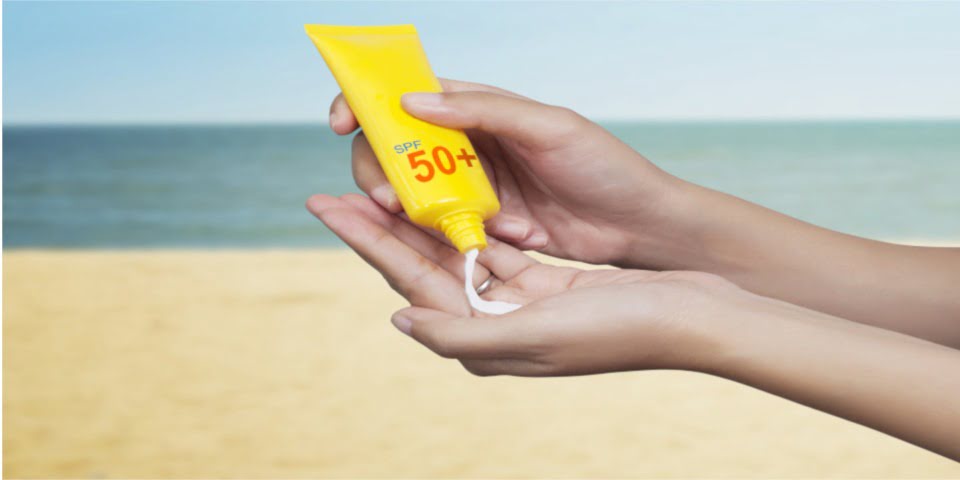Skin cancer is one of Australia’s most common types of cancer and with warmer weather approaching, it’s time for pharmacies to highlight SunSmart strategies in sun-safe messages while advising on ways to help prevent melanoma and detect it early.
Overexposure to the sun’s ultraviolet radiation is the main cause of skin cancer. It also causes sunburn and tanned skin, and contributes to premature ageing and even eye damage, according to the Cancer Council.
So, it makes sense that the best way to prevent skin cancer is by adhering to the sun safety rules:
- Seek shade, especially during the hottest part of the day.
- Wear sun-protective clothing, covering the back, arms, shoulders and legs.
- Wear a broad-brimmed hat that protects the neck and ears.
- Wear sunglasses that meet the Australian standard (AS/NSZ 1067).
- Apply a generous amount of broad-spectrum sunscreen with an SPF of at least 30, at least 20 minutes before heading outside. Reapply sunscreen every two hours after swimming or excessive sweating.
Sunscreen selection
When used alongside other sun-safe measures, sunscreen plays an important role in protecting against skin cancer. But if it’s not used correctly or reapplied often enough, it may not be providing the protection the user thinks it is.
An article from health and lifestyle writer Karina Bray published by consumer advocacy group CHOICE in 2020 advises on “what to look for when buying a sunscreen”, including the following:
- Choose the correct SPF. Opt for SPF50+ for maximum benefit.
- Consider the type of application. Types of sunscreens include lotions and milks, creams, gels, sprays, roll-ons, sticks and powders. While this comes down to personal preference – the best sunscreen being the one that’s actually used and applied – considering where you’re going to apply a particular sunscreen will determine what you purchase. For example, roll-ons and sticks may be great for small areas, whereas creams and lotions are better for large areas. When it comes to sprays, the key is using enough. “They’re easy to apply and great for hairy bodies – but make sure you use enough.”
- Water resistance. Summer is synonymous with the beach or the pool, so make sure you opt for a sunscreen that’s water resistant. However, don’t be misled by labels promoting such benefits as “four hours water resistant” – it may well stay on your body for this amount of time but should [still] be reapplied frequently for maximum benefit.
- Sensitive skin considerations. The best option if you have sensitive skin or are sensitive to sunscreen is to consult with your dermatologist. However, sunscreens marketed specifically for toddlers, infants and children may be a suitable option, as they typically contain “more physical blockers and fewer chemical filters.”
- Advice for babies. “It’s best to keep babies out of the sun (where the UV index is three or more) as much as possible for the first 12 months.” The Cancer Council recommends avoiding “sunscreen on babies younger than six months”, so, using other options for protection here such as a hat, clothing, and shade, is key.
The Cancer Council also recommends using a broad-spectrum product when it comes to sunscreen. This means the sunscreen filters both UVA and UVB rays, providing better protection against sunburn and skin cancer. The Council also advises checking the sunscreen’s use-by-date as “products that are past their use-by-date will not give proper protection”.
Reapplying is key
It’s recommended that sunscreen is reapplied every two hours to provide best protection. But what is the reasoning behind this?
According to sunscreen brand, Maxiblock, “when applied correctly, sunscreens are designed to reduce skin burn time by the claimed SPF factor”.
SPF, or sun protection factor, indicates how well the sunscreen protects the skin against sunburn.
The Australian Academy of Science explains the formula used to get the SPF number: “The number of seconds it takes a patch of skin to slightly redden when covered in sunscreen is divided by the number of seconds it takes to slightly redden when there is no sunscreen applied. Say it took 300 seconds for the skin to burn with sunscreen, and 10 seconds to burn without it. 300 is divided by 10, which is 30, so the SPF is 30.”
While sunscreen testing occurs in tight-controlled laboratory conditions, Maxiblock says this isn’t reflective of real life.
“In real life,” the company states, “such as at the beach, playing sports or outdoors at work, sunscreen will be worn down by our active lifestyle … So how do we ensure that people do not get sunburnt in real life conditions? We simply recommend that sunscreen is liberally and frequently applied, then reapplied to ‘touch-up’ the applied sunscreen; ensuring it’s functioning effectively at all times.”
This feature was originally published in the October issue of Retail Pharmacy magazine.







